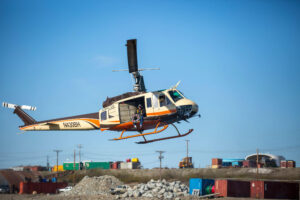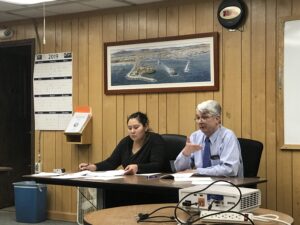Mushing’s connection to Western Alaska is both historic and iconic, but interest in it has varied over the years. Has mushing seen its heyday here in Nome? Even though the Iditarod won’t finish this year on Front Street, one long-time resident recognizes signs that point to increased popularity in the sport.
“Historically mushing wasn’t really a recreational sport for a lot of people, it was a need for transportation. Either for hunting or just travel.”
– Conner Thomas
Conner Thomas has lived in Nome for 42 years. He is an experienced dog musher. He first arrived in Nome in 1978 as a recent graduate of law school and a Vista volunteer for Alaska Legal Services. By that time, mushing in Nome had already become popular as a sport. He was introduced to mushing in one of Iditarod’s most iconic moments and closest finishes.
“The first year that I happened to watch the race was the year the race was won by Dick Mackey by one second as he and Rick Swenson struggled down the racing line, and it just captivated me.”
Not long after the excitement of 1978, Conner began to build a team of his own. At first, he began to mush as a means to get out, see the country, and enjoy the winter. But then he became more competitive and raced the Iditarod twice, the Yukon Quest once, and a number of middle distance races across the state. He is a veteran of running dogs and witness to the ebb and flow of the popularity of mushing in Nome.
Conner noted a time in the 1980s and 90s when mushing in Nome was much more popular with more local races and a bigger musher community. Rookie Musher Reese Madden echoed this local history when KNOM spoke with him while preparing for Nome Kennel Club’s last race – the out and back Engstrom Mountain Sled Dog Race.
“It was quite the show back in the day. Well this was the whole city of Nome not allowing dog teams to be inside town. That’s why Aaron [Burmeister] took off, that’s why a bunch of people left because you can’t be in town with them. You have to have a central dog lot this and that.”
– Reese Madden
Zoning laws in Nome set standards for how many dogs could be allowed on properties within city limits. However, Conner perceives a more prominent challenge to mushing in Western Alaska.
“The bigger challenge is the cost of maintaining the team. I mean if that is something that could be reduced in any way, then I think you’d see more people that might be a little more interested taking on the challenge of maintaining a team in Nome.”
– Conner Thomas
Nome, and other remote communities off the road system, face paying the extra expense to have food and other needed supplies shipped in to care for their dogs. Although, even without an Iditarod finish in Nome this year, Conner believes there is more excitement around mushing these days than in years past, evidenced by the number of dog mushing events in this year’s Nome Winter Festival and the number of races hosted by the Nome Kennel Club.
To learn more about the history of the world’s oldest dog mushing organization, click here.
Image at top: Dogs waiting to start the 2021 Nome Kennel Club Engstrom Mountain Sled Dog Race. Photo Credit: Karen Trop/KNOM.





